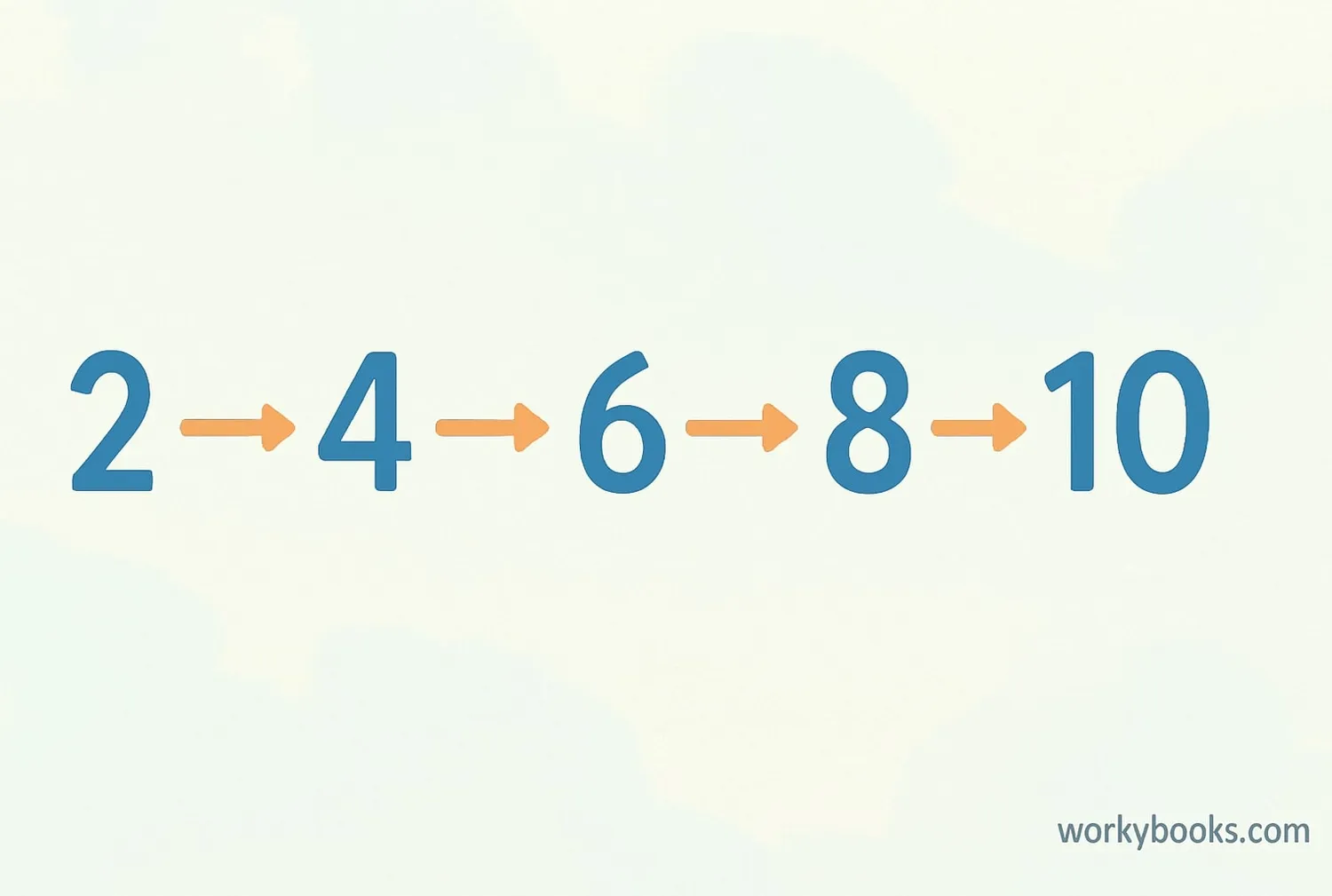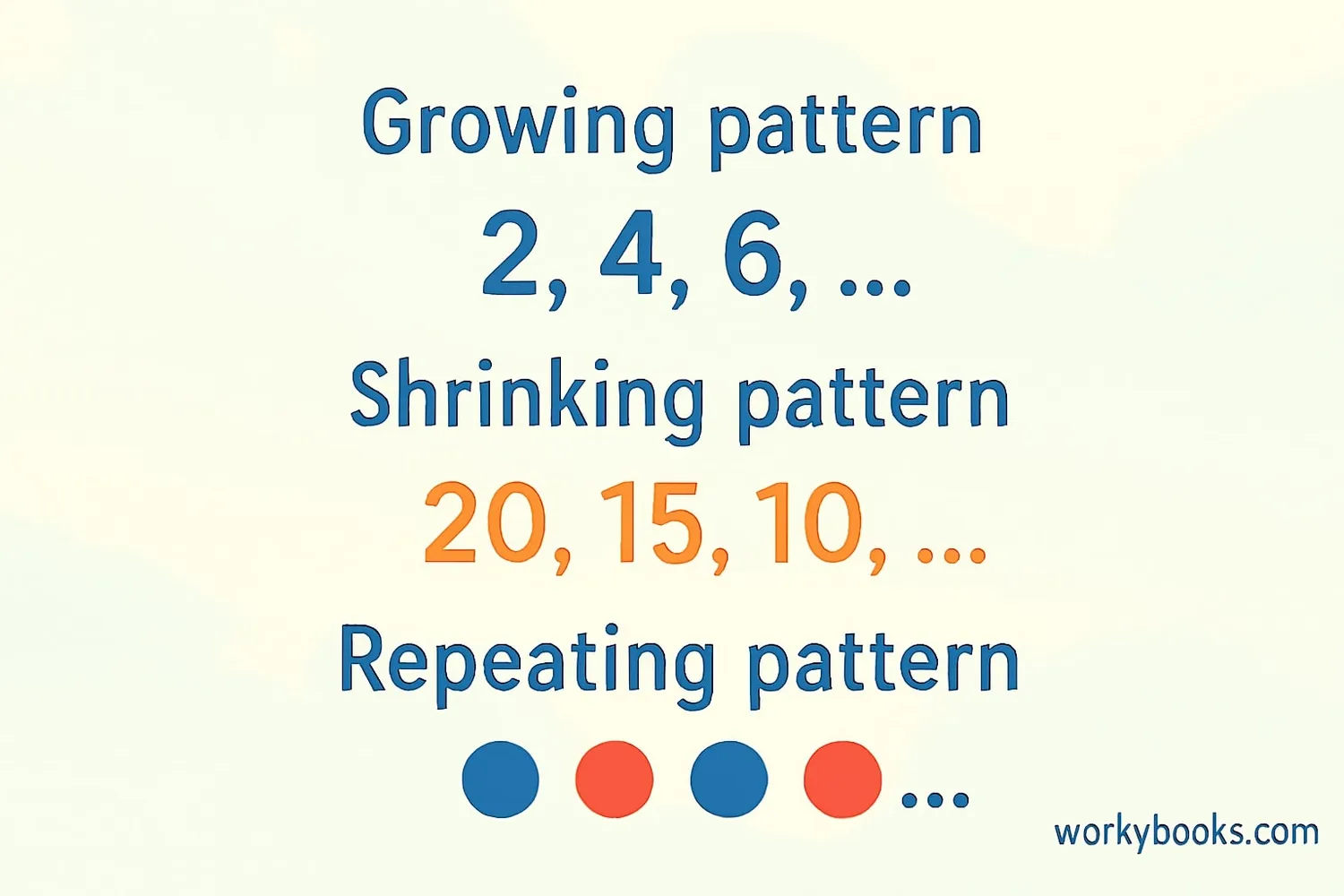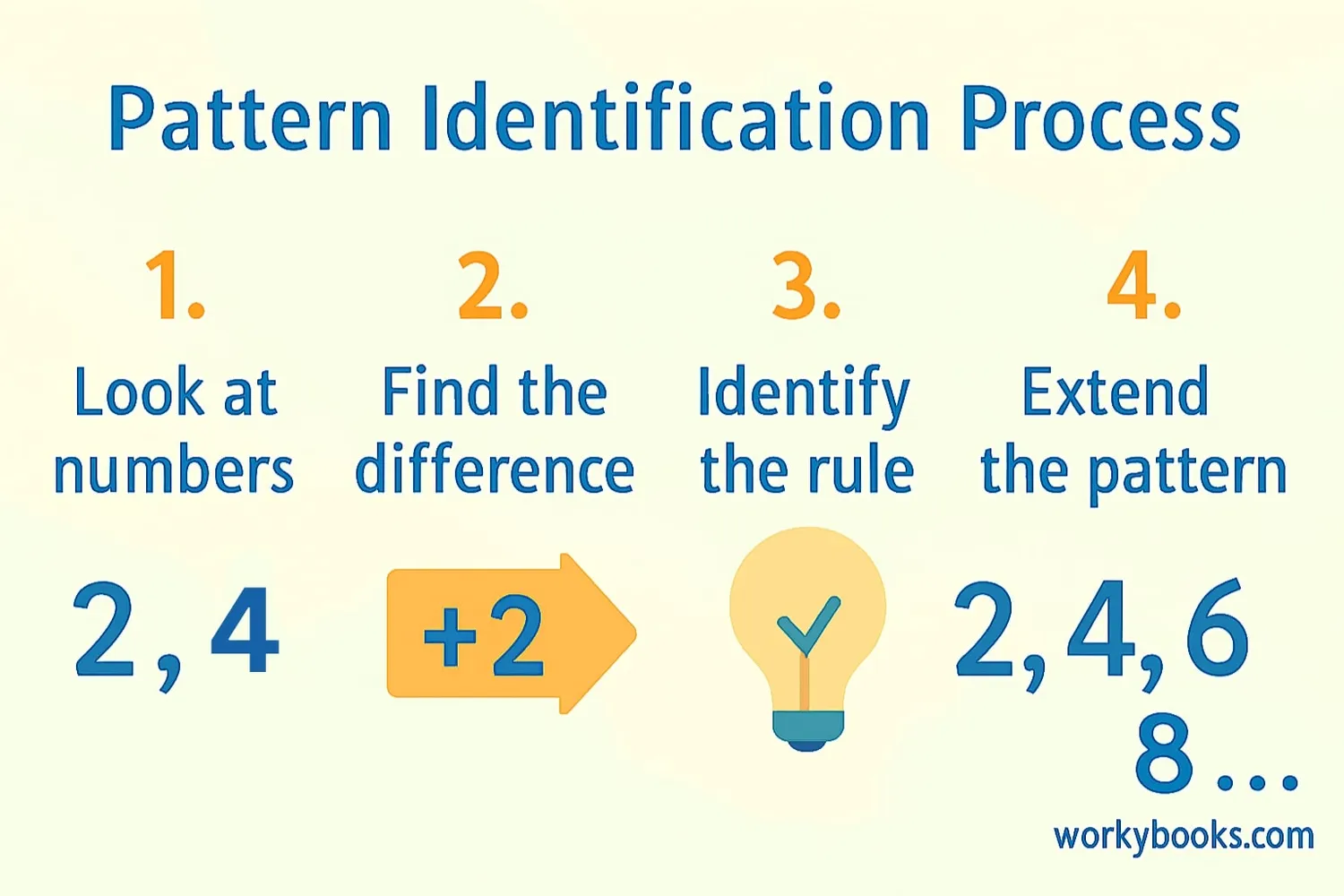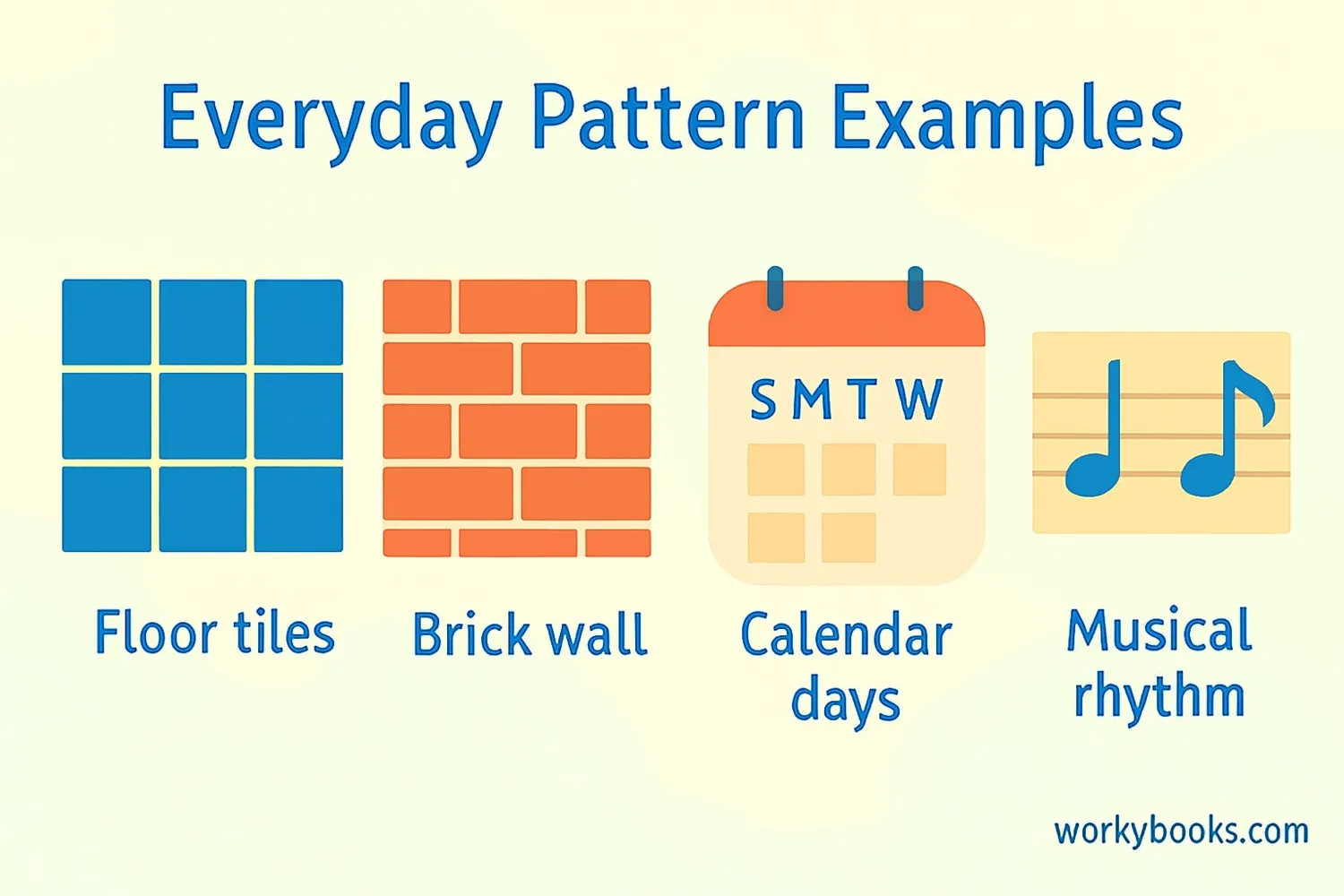Arithmetic Patterns - Definition, Examples, Quiz, FAQ, Trivia
Learn to identify, extend, and create number patterns with easy explanations and practice activities
What are Arithmetic Patterns?

Arithmetic patterns are sequences of numbers that follow a specific rule. They help us understand how numbers relate to each other and predict what comes next in a sequence.
Patterns are everywhere in math and in our daily lives! When you count by 2s (2, 4, 6, 8...) or notice the numbers on a clock, you're seeing arithmetic patterns.
The rule is the special instruction that tells us how the pattern works. For example, in the pattern 5, 10, 15, 20... the rule is "add 5 each time".
Pattern Example
This pattern follows the rule: "Add 3 to each number to get the next number"
Key Concept
Every arithmetic pattern has a rule that connects the numbers. Finding this rule helps us understand and extend the pattern.
Types of Arithmetic Patterns

There are several types of patterns we see in mathematics. Here are the most common ones:
Growing Patterns
Numbers that increase by the same amount each time. Also called increasing patterns.
Rule: Add 5 each time
Shrinking Patterns
Numbers that decrease by the same amount each time. Also called decreasing patterns.
Rule: Subtract 5 each time
Repeating Patterns
A sequence that repeats the same elements in a cycle.
Rule: Repeat triangle, circle
Geometric Patterns
Patterns made with shapes that repeat or follow a rule.
Rule: Repeat triangle, square
Remember
Patterns can be made with numbers, shapes, colors, or even sounds! The important thing is finding the rule that connects them.
How to Identify and Extend Patterns

You can become a pattern detective by following these simple steps:
Step 1: Look at the numbers - Examine the sequence carefully.
Step 2: Find the difference - Calculate the change between consecutive numbers.
Step 3: Identify the rule - Determine what operation (add, subtract, multiply) is being repeated.
Step 4: Extend the pattern - Apply the rule to find the next numbers.
Let's practice with an example:
Pattern: 4, 7, 10, 13, ...
Step 1: Look at the numbers: 4 → 7 → 10 → 13
Step 2: Find the difference: 7-4=3, 10-7=3, 13-10=3
Step 3: Identify the rule: Add 3 each time
Step 4: Extend the pattern: 13 + 3 = 16, then 19, 22, etc.
Pattern Practice
Can you find the rule? (Hint: Look at the difference between numbers)
Real-World Pattern Examples

Patterns aren't just in math class - they're all around us! Here are some real-world examples:
Example 1: Stair steps - Each step is the same height, creating a pattern of equal increases.
Example 2: Calendar - Days of the week repeat in a 7-day cycle (Monday, Tuesday, Wednesday...).
Example 3: Music - Beats in music often follow repeating patterns of sound and silence.
Example 4: Nature - Pinecones and sunflowers have spiral patterns following the Fibonacci sequence.
Example 5: Building design - Windows on a building might follow a pattern: window, wall, window, wall...
Pattern Tip
Look for patterns in your daily routine - what time you eat meals, how your classes are scheduled, or even how your shoes are laced!
Pattern Practice Quiz
Test your pattern skills with this 5-question quiz. Choose the correct answer for each question.
Frequently Asked Questions
Here are answers to common questions about arithmetic patterns:
Pattern Trivia
Discover interesting facts about patterns in mathematics and nature:
Ancient Pattern Masters
The ancient Babylonians used arithmetic patterns in their calendar systems over 4,000 years ago. They created sophisticated patterns to track the movement of planets and stars.
Nature's Patterns
Fibonacci patterns appear throughout nature - in sunflower seed arrangements, pinecones, and even hurricane formations. These patterns follow the sequence 1,1,2,3,5,8,13 where each number is the sum of the two before it.
Musical Patterns
Most music follows repeating patterns called "rhythms" and "melodies". A waltz has a 1-2-3 pattern, while a march has a 1-2 pattern. These patterns help create the structure of songs.
Endless Patterns
The number Pi (π) has a decimal pattern that never ends and never repeats. Mathematicians have calculated over 62 trillion digits of Pi and still haven't found a repeating pattern!





